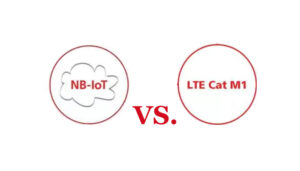The 2.4GHz ZigBee technology is a wireless online protocol for low-speed short-range transmission. The underlying is the media access layer and the physical layer using IEEE 802.15.4 standard specification.
The 2.4GHz ZigBee wireless technology’s main features have low speed, low power, low cost, support a large number of online nodes, support a variety of online topologies, low complexity, and fast, reliable, and safe.
With the continuous development of society, the advantages of wireless have gradually appeared. For examples:
The wireless communication coverage is large, almost unreasonable; wireless communication can be settled at any time, increased link, installation, and expansion of the link at any time;
Wireless communication can be built quickly (10 minutes) to achieve temporary, emergency, and disaster prevention and communication purposes;
Wired communication has geographical restrictions and a longer response time.
Wireless communication is exceeded in terms of traditional wired communication in terms of reliability, availability, and destruction, especially in some special geographic environments, more advantageous.
With the maturity of wireless technology, industrial, medical, and other industries have also begun to use 2.4G communication, while 802.15.4, ZigBee, and Wi-Fi are also more applications.
2.4GHz ZigBee and Wi-Fi each have a significant feature, and many of the characteristics have complementarity, combined with the two wells with good application prospects.
Wi-Fi has been used in batches, and many embedded Wi-Fi devices are more popular with networks, such as Wi-Fi POM and Wi-Fi weighing in supermarkets.
Nowadays, industrial environments are also more, mainly in the Wi-Fi access of serial port equipment for industrial wireless data acquisition systems.
What is the 2.4GHz Zigbee protocol model?
2.4GHz Zigbee protocol stack from top to bottom consists of the application layer, application convergence layer, network layer, data link layer, and physical layer.
1. Application layer, which defines various types of application services, is the uppermost user of the protocol stack.
2. Application convergence layer, which is mainly responsible for mapping different applications to the Zigbee network, mainly includes security attribute settings, the convergence of multiple service data streams, device discovery and service discovery, etc.
The network layer, the functions of network layer include topology management, MAC management, routing management, and security management.
4. Data link layer, IEEE082 series of standards will be divided into logical link control and media access control two sub-layer data link layers.
5. Physical layer, IEEE802.15.4 defines 2.4GHz and 868MHZ/915MHz these two physical layers, are based on direct sequence spread spectrum packet format, the main difference between the two is the operating frequency, modulation technology, spread spectrum code length, and transmission rate.
What is the 2.4GHz Zigbee Networks?
The Zigbee network configuration, a low data rate wireless personal area network (WPAN) includes two types of wireless devices: full-function devices (FFDs) and reduced-function devices (RFDs). Among them, FFDs can communicate with FFDs and RFDs, while RFDs can only communicate with FFDs, and RFDs cannot communicate with each other.
There are three main topologies of Zigbee networks, namely, mesh-type (Mesh) networks, star-type networks, and composite networks.
1. Mesh network, which is generally a network formed by several FFDs connected together, is complete peer-to-peer communication between them, and each node can communicate with other nodes within its wireless communication range.
2. Star network, a network consisting of a PAN coordination point and one or more terminal nodes, the PAN coordination point must be an FFD.
Which is responsible for initiating the establishment and management of the entire network, and the other nodes, generally RFDs, are distributed within the coverage of the PAN coordination point and communicate directly with the PAN coordination point. Star networks are usually used in situations where the number of nodes is small.
3. Mesh network can extend the network through FFD to form a composite network of the mesh network and star network.
In the composite network, the information collected by terminal nodes is first transmitted to the coordination point within the same subnet, and then to the PAN coordination point of the upper layer network through the gateway joint, and the composite network is suitable for networks with larger coverage.
Main applications of 2.4GHz Zigbee technology
2.4GHz Zigbee technology is particularly suitable for applications where the amount of data swallowed is small, network construction investment is low, network security requirements are high, and frequent battery replacement or charging is inconvenient.
2.4GHz ZigBee technology is aimed at industrial, home automation, telemetries, and remote control, such as lighting automation control, wireless data acquisition, and monitoring of sensors, oil fields, power, mining, and logistics management applications.
Consumer electronics and home intelligence will be the most promising markets for Zigbee technology. Devices that can be connected to the network at home include TVs, VCRs, PC peripherals, children’s toys, game consoles, access control systems, windows and curtains, lighting, air conditioning systems, and other household appliances.
The introduction of Zigbee technology in home devices will greatly improve the environment and comfort of people living there.
The device of 2.4GHz ZigBee and IEEE802.15.4 is mainly concentrated in:
Wireless sensor detection, low-grade control in industrial;
Personal monitoring instrument, low-power wireless medical equipment;
High-end toys;
Electrical network and control;
Wireless consumer equipment;
Light control, etc.
Current batch applications are mainly in asset tracking, logistics management, intelligent lighting, remote control, medical care, and remote meter reading systems.
How does 2.4 GHz wireless technology solve the problem of crowded frequency bands?
802.15.4 use DSSS and OFDM using DSSS, 802.11. In actual use, we tested the office building, factory, and other environments. Communication is more blocked and distance problems and congestion have not impacted too much.
802.15.4, 2.4GHz ZigBee technology is the most ideal choice for the WSN network, with low power consumption, but how to achieve low power consumption, what factors need to consider?
IEEE 802.15.4 defines an optional MAC layer superframe structure.
The superframe includes active and non-active (inactive) two parts in non-active portions, and the device can enter low power mode (sleep state);
In the active part, it is divided into a competitive period and a non-bidding period and the competition period is provided for the equipment used in CSMA-CA methods;
The non-competitive period consists of several guarantees, providing some devices that need to retain certain data bandwidth.
This superframe structure reflects a major feature of IEEE 802.15.4 low power consumption. The introduction of a non-active period limits the opening time of the transceiver between the devices, which makes them asleep when countless data transmissions, thereby saving Power expenditure.
The 2.4GHz ZigBee device is divided into full-featured devices and streamlined features, and streamlined features relatively full-featured device protocol stacks simple and memory smaller, only with a full-featured device, and full-featured devices have a complete IEEE 802.15.4 protocol Function, two devices that interact with any nodes within its transmission range, which can constitute a mesh network, a star network, and a tree network.
The low-power system has a power relationship in addition to the power considering the transfer.
What is the bandwidth of the 2.4GHz ZigBee signal?
The underlying of 2.4GHz ZigBee uses IEEE802.15.4, which means that the physical bandwidth is bandwidth of IEEE802.15.4 is 250kbps. However, physical bandwidth and effective data rate are distinctive.
For 2.4GHz ZigBee, the data rate should also consider the topology, data routing relationship, and data volume in the network.
These factors must be fully considered in the actual application. Because there are many factors involved, actual calculations cannot be given here.
Experience and routing have the greatest impact on data rates. Each additional level route increases from 100ms to 200 ms. 2.4GHz ZigBee is not a real-time network.
Secondly, the network’s concurrent data has a large impact. In short, 2.4GHz ZigBee is suitable for low-speed sensing applications, and the actual bandwidth should consider the actual situation of the network.
Besides the 2.4GHz ZigBee Wireless Technology article, you may also be interested in the below articles.
PCB Antenna VS. External Antenna
Ceramic Antenna VS. PCB Antenna, A Comparison Guide
Wifi vs. 5G, is 5G better than Wifi?
Mobile Networks’ Evolution From 1G To 5G
How To Choose Embedded Antenna For IoT?
Wifi Vs. LTE, What Is The Difference?




